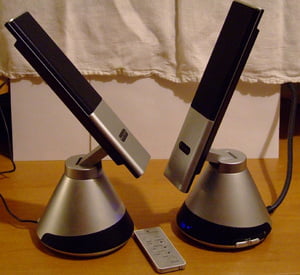Most Pakistanis I meet seem to be shocked that my husband and I have actually chosen to live in Pakistan. “Why?” they ask, “We are all trying to get out of here, and you are trying to stay?”
Since 9/11, less and less foreigners have chosen to make their lives in Pakistan. This is understandable, as many other countries in the world are much more accommodating for expatriate workers than the Islamic Republic of Pakistan. Foreigners who do end up settling here are, for the most part, mavericks who enjoy the thrill of chaos and political instability. They are the type of people who consult travel advisory lists, not to avoid, but to get inspiration for their next destination.
If you’re thinking of coming to Pakistan long-term, meaning for more than backpacking or traveling, here is a list of disadvantages you should be well aware of before your feet hit the ground. Most of these points are applicable in any part of the country, but keep in mind that city living and village living each have their own unique advantages and disadvantages.
1) Lengthy Visa Application Process
Although short-term tourist and business visas can be availed from your nearest Pakistani consulate or embassy, long-term visas are not so easy to secure. The visa application process can take longer than six months for long-term visas. You may wait six months to only get a one-year visa. Six months later, you need to start the application process again. Half of your year may be spent calling the Ministry of Interior to make sure your paperwork hasn’t been lost in the seemingly endless bureaucracy. See my article “Securing a Long-Term Visa for Pakistan” for detailed information, and don’t expect this process to be outlined clearly for you.
2) Widespread Corruption
Corruption is rampant throughout society as well as in government offices. For example, on your way to the visa office in Lahore you will likely be approached by at least three shady men who promise to get your visa for a “special price.” Locals and foreigners alike tend to steer clear of dealing with police or the court system. We personally have lost 3.5 lakh, about $6,000 or more due to rising inflation, to the “justice” system alone. When expatriate salaries are generally upwards from $500 a month, that is an entire year’s salary into the pockets of dishonest cronies. This type of situation is common, and language reveals all when it comes to the Urdu phrase for bribery: chai pani – “tea and water.”
3) Sweltering Heat
Lahore’s temperatures in May and June can reach 50 degrees Celsius, which translates to 122 degrees Fahrenheit! The average temperatures of Karachi and Islamabad are slightly lower, but it’s still darn hot in summer. Other cities in the Punjab swelter as well; Multan has the reputation of being the hottest of them all. Not only does the mercury rise in summer, but it doesn’t cool down much at night. Pakistanis who can afford it tend to go abroad for the summer months, although you can expect higher airfares at this time. It is uncomfortably hot from mid-March to mid-October. If you choose to live in the Northern Areas of Pakistan you’ll be dealing with bitter cold rather than the heat.
4) Load-Shedding
Load-shedding is the word for government controlled power cuts. At the time of writing, power cuts in the Defence suburb of Lahore were at least six hours every day. In winter this is bearable, but in the boiling heat of summer it can literally kill you. I have become much too familiar with this word during my three-year tenure in Pakistan. Read more in “Coping with Pakistan’s Energy Crisis”.
5) Monsoon Flooding
During monsoon season, late July to September, you can risk being marooned in flooded areas. Mountainous areas do not experience monsoon the same way cities like Lahore, Hyderabad, and Karachi do. To use the old cliché: when it rains, it pours. Poor drainage systems lead to flooding and many cars are ruined every year in rainwater. Raw sewage comes up through open drains, and you may have to wade through knee deep, or even deeper, water.
6) Lack of Organization
Being a “J”, someone who lives by organization and discipline, on the Meyers Briggs personality spectrum will make living in Pakistan difficult. A lot of people don’t like to set times for anything. If you call the AC repairman, he may say, I’ll be there “in the morning.” Then he’ll show up at 4pm after you’ve spent the whole day waiting. It’s possible he may not even show up until the next day! Getting things done takes a lot of resolve and patience. Foreigners in Pakistan must accept that we cannot always manage our time optimally in a country that does not do so. Even as Daylight Savings time was due to end on September 1st, 2008, as late as August 30th the government announced that the time change would be pushed back until October 31st.
7) Chaotic Driving
If you’re coming from the states, you’ll have to first get used to driving on the “other side” of the road. This is an easy feat compared to getting used to the traffic. You need to assume that most people do not have licenses, have never taken driver’s education, do not follow any system of rules, and only look ahead while driving. Motorbikes, donkey carts, horses, rickshaws, bicycles, cars, buses, and Bedford trucks all travel in the same lanes. If you can erase the ideas of “right of way” and “traffic regulations” from your mind, you have a chance of being able to be your own chauffeur in Pakistan. Otherwise, do as most foreigners do and hire a full-time driver.
8) Polluted Cities
Living in any South Asian city will likely cause you to see gray when you blow your nose. Air quality is bad, and when driving from afar you can actually see the cloud of smog enveloping Lahore. Many imported cars are run without catalytic converters, as fuel in Pakistan is rarely unleaded. Add this to the toxins put out by auto-rickshaws alone and you’ll be coughing. Respiratory problems are common among city dwellers in Pakistan.
9) Political Unrest
Let’s face it, Pakistan is not the most politically stable country right now. Musharraf’s exit from politics is bringing the country into a new era, which may be for better or may be for worse. Since the nation’s inception in 1947, there have been political grievances and sectarian tensions. Expatriates in Pakistan generally live in major cities, which are staging grounds for strikes, rallies, and protests. The unemployed sector has made protesting into something of a pastime, and there will always be a Salman Rushdie or a Danish cartoonist to be rioting about.
10) Diminishing Security
Lahore is currently the safest major city to live in, but even Pakistan’s cultural center is facing diminishing security. As inflation rises and food prices soar, people are becoming desperate for cash. Robberies have increased in the last several months as the political situation has further destabilized. In the short time I’ve been living in Lahore, several public locations have been bombed along with the usual targets of mosques and government buildings. Seemingly random places, such as a shoe store in Liberty market, a bus stop near FC College, and crowded shopping centers have been targeted. Unfortunately there’s no way to be 100% sure you won’t run into a suicide bomber on your way to dinner.
Hopefully this guide can help you make a decision as to whether you’ll be moving Pakistan anytime soon. Knowing the disadvantages ahead of time can help lessen culture shock and prepare you mentally for what you’ll encounter. If you are planning to live in a small mountain village, you’ll surely face different types of disadvantages than those mentioned here, but you will still need to deal with visa issues and corruption no matter how idyllic village life may be.
Be sure to see the article”10 Things to Love About Life in Lahore” for the flip side of the coin.




